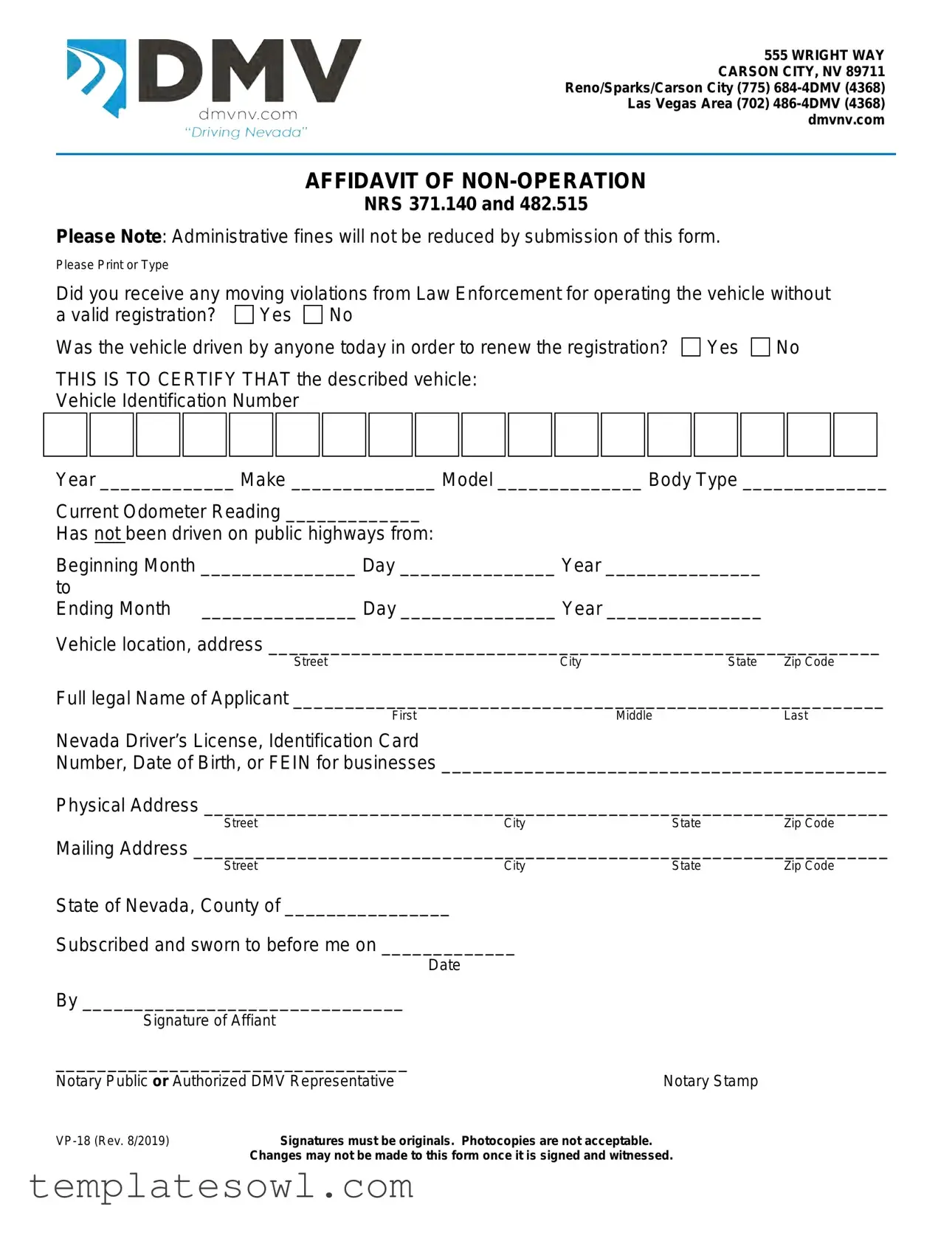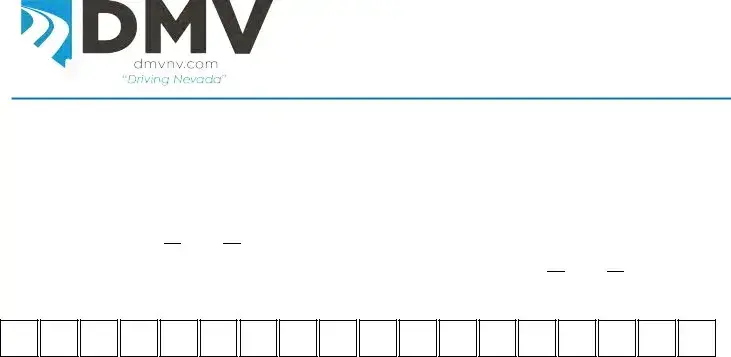What is the DMV VP-18 form?
The DMV VP-18 form, also known as the Affidavit of Non-Operation, is a document used in Nevada to certify that a vehicle has not been operated on public highways for a specified time period. This form is especially important for vehicle owners who want to avoid paying registration fees for the period their vehicle was not in use.
Why do I need to submit the VP-18 form?
If you have not driven your vehicle for a designated time frame, you must submit the VP-18 form to notify the Department of Motor Vehicles (DMV). This helps avoid unnecessary registration fines. However, please note that submitting this form does not reduce any administrative fines already incurred.
How do I fill out the VP-18 form?
To complete the VP-18 form, you need to provide details such as the Vehicle Identification Number (VIN), make, model, year, and current odometer reading. You also need to specify the period during which the vehicle was not in use and fill in your contact information. Ensure that all information is accurate and complete.
What happens if I drove my vehicle without a valid registration?
If you received moving violations for operating your vehicle without a valid registration, you will need to answer "Yes" on the form. This could result in further implications for your registration and fines. It's best to consult with a legal advisor if you find yourself in this situation.
Can I make changes to the VP-18 form after it has been signed?
No, you cannot make changes to the VP-18 form once it has been signed and witnessed. Ensure that all information is accurate before submission, as any errors might complicate the processing of your form.
Is the VP-18 form acceptable in electronic format?
The form must be submitted in a hardcopy format with original signatures. Photocopies are not acceptable. If your DMV allows for electronic submissions, please confirm their specific requirements.
Do I need a notary for the VP-18 form?
Yes, the VP-18 form must be signed in the presence of a notary public or authorized DMV representative. This adds validity to your claim that the vehicle was not in operation during the stated period.
What should I do if I don't have a Nevada driver’s license?
If you do not have a Nevada driver’s license, you can provide the identification number from your identification card or the Federal Employer Identification Number (FEIN) if you are submitting as a business. Ensure to include your date of birth for identification purposes.
Where do I submit the VP-18 form?
You can submit the completed VP-18 form to your local DMV office. For the Reno/Sparks/Carson City area, you can contact (775) 684-4DMV, and for the Las Vegas area, call (702) 486-4DMV. Always make sure to keep a copy for your records.


 Yes
Yes  No
No
 Yes
Yes  No
No